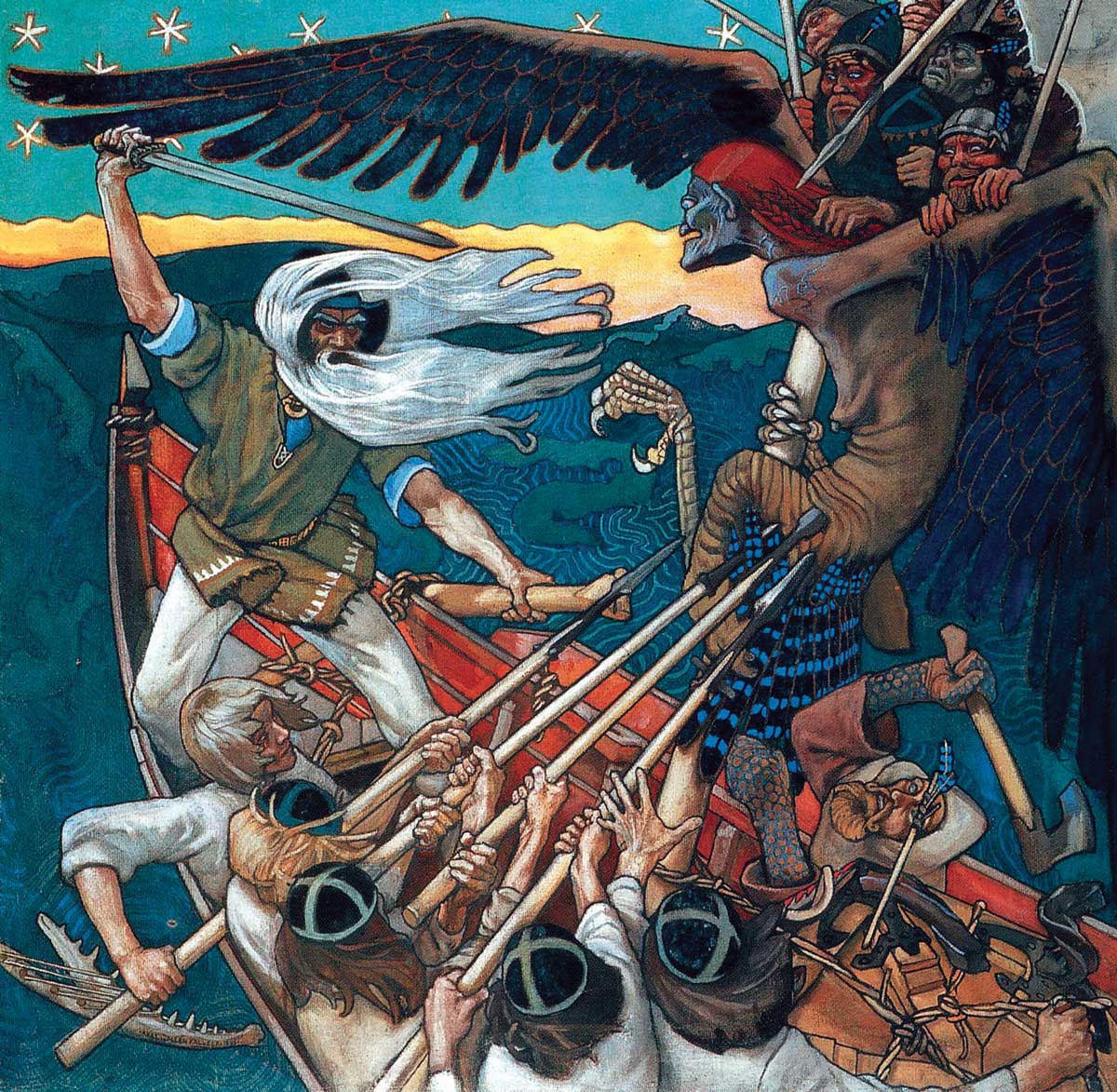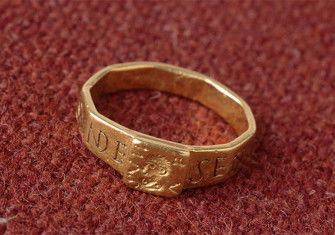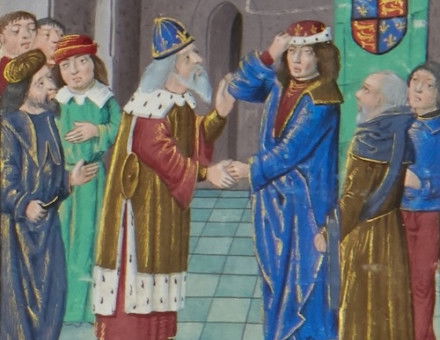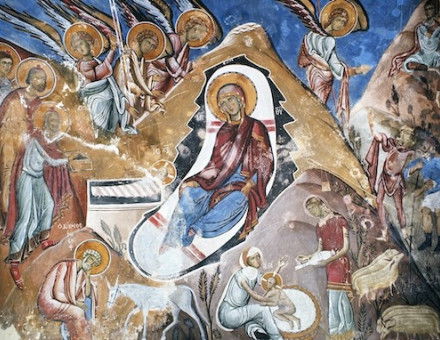Väinämöinen and the Sampo
A hero of Finnish folklore helps his nation find its identity.

Väinämöinen is a chief figure in the oral epic poetry, lyrical songs and creation stories of ancient Finno-Ugric mythology. He is normally depicted as a wise old man and variously seen as a deity who existed before the creation of the world and as sage and a bard, whose enchanting songs are accompanied by the first kantele, the traditional Finnish zither (that he made from the jawbone of a giant fish). Väinämöinen’s heroic sea voyages involve great feats, such as bringing back the Sampo – a mysterious magical device, difficult for the Finns to define – that he takes from Pohjola, a dark and terrible land in the extreme north, which can be read as a literary trope for the place from which all evil emanates. In Akseli Gallen-Kallela’s painting, Väinämöinen’s arch-enemy, Louhi of Pohjola, transforms into a vicious bird to try to steal back the Sampo.







